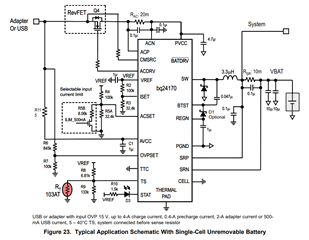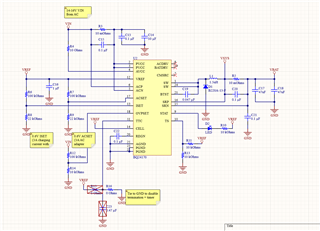Hello,
we have a design that basically matches figure 23 of the datasheet (except we are using 2 cell batteries)

The system load is directly connected to the battery, before the charge current sense resistor.
The batteries we are going to use have integrated protection ICs that disconnect the battery under various fault conditions by switching off a pair of N-channel mosfets on the low side.
How does the BQ24170 behave when a good AC adapter is present and the battery is disconnected and a system load is present?


